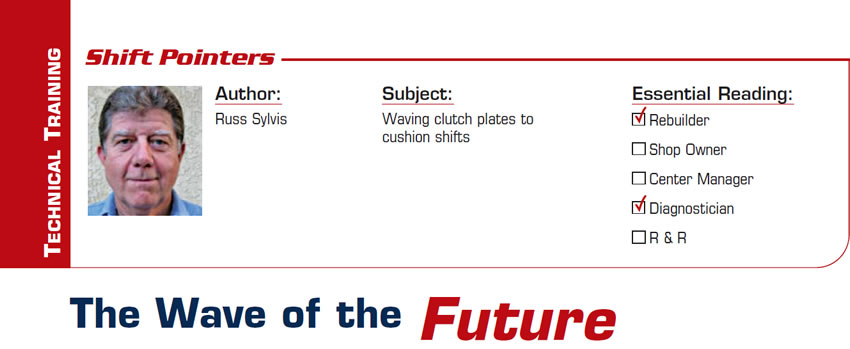The BorgWarner 4473: Unlocking the Mystery
Through the BorgWarner 4473 transfer case, which is full-time all-wheel drive, there is a 35%/65% constant torque split front to rear. The 4473 is a relatively simple transfer case that uses a viscous coupling to control a planetary differential to split the torque. The planetary uses straight-cut gears for the planet pinions and the sun and annulus gears, which means that there is little or no thrust load on the internal components.
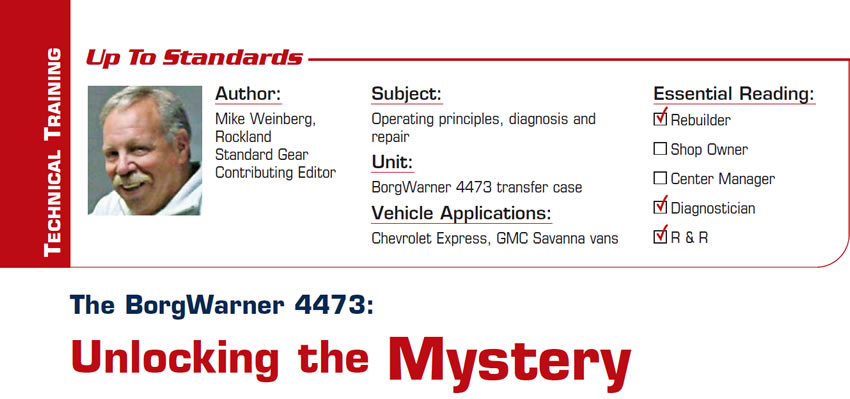
Pay Close Attention to Valve-Body Modifications
This particular call came in just like many others: The technician had already eliminated everything he could interpret as the possible root cause of the concern. The vehicle in question was a 2006 Dodge 2500 pickup with a 5.9-liter diesel and a 48RE transmission. The owner had bought the vehicle recently and had concerns that the transmission was not shifting properly.
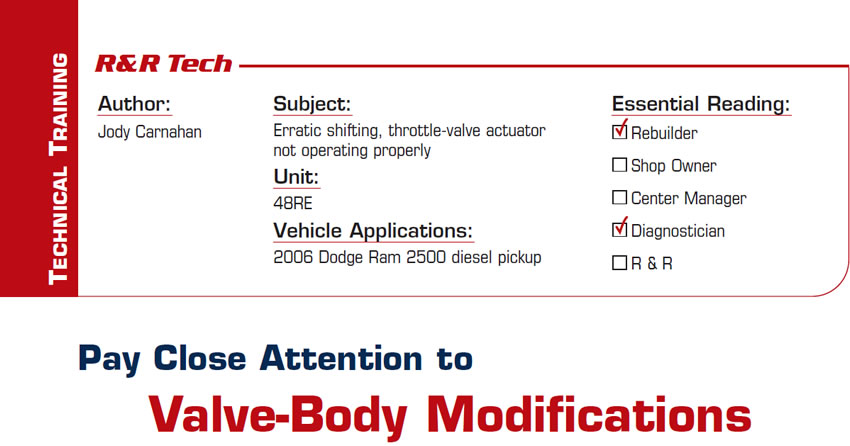
October 2009 Issue
In This Issue
Nissan RE5R05A: First- and Second-Design Valve Bodies
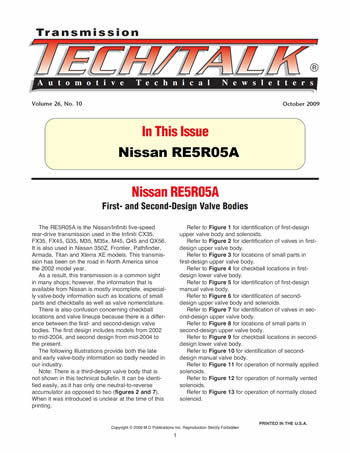
Orifice Control Within the Converter, Part 3
The secondary path of the charge/TCC-release oil is regulated to some degree by transmission parts within the confines of the converter. In some units, the charge oil is regulated by the orifice created between the raised area on the stator shaft (or support) and the impeller hub. In other units, it is regulated by restricting the flow of oil through or around the input-shaft bushing mounted inside the stator support. The Allison 500 series is a unique example because it uses both methods to regulate oil flow, as it both enters and exits the converter.
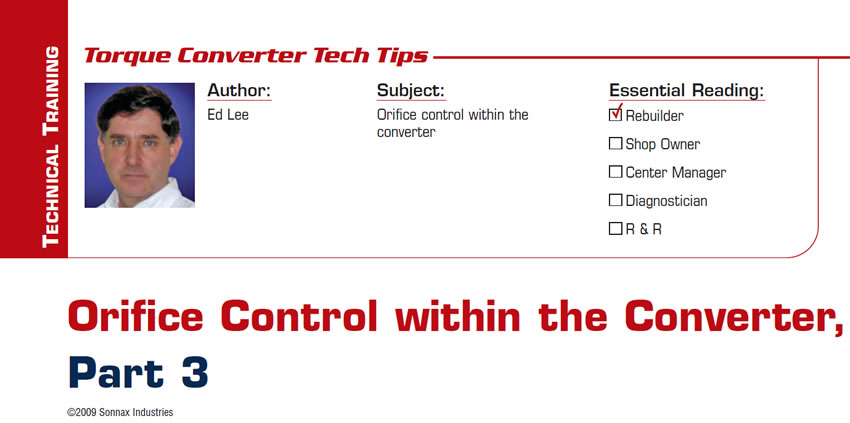
Who’s in Control?
Customers often try to control our pricing by dropping subtle hints or making blatant displays of their mindset as to what they are willing, able or want to pay. Although we shouldn’t, many of us do let it affect the price we quote.
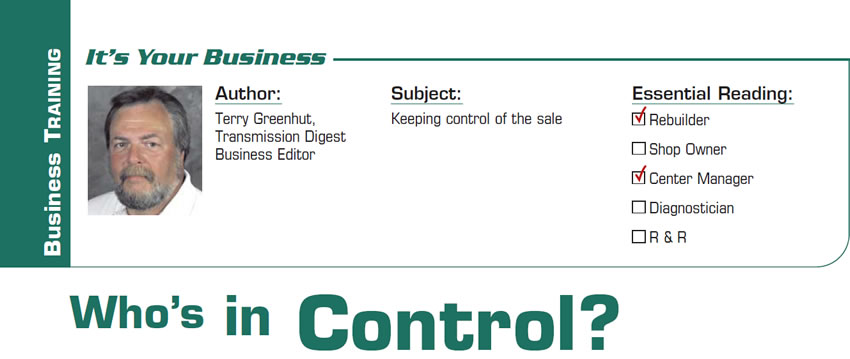
Diagnosing without Testing ‘Like Throwing Darts in Dark’
This particular 2003 Toyota Corolla came to my friend’s shop with a simple miss and a code for the No. 4 coil confirmation signal not being received by the PCM. The first part tried was a coil from the dealer. With the same code coming back and the engine still missing on the same cylinder, more testing revealed that the injector for that cylinder was not operating, and another was substituted. This resulted in no change, and another coil was tried, then switched to another cylinder. Injectors were switched around, and then a PCM was ordered and the car was sent to us for programming. My friend assured me that he wanted nothing further to do with the car and told us to find the problem.
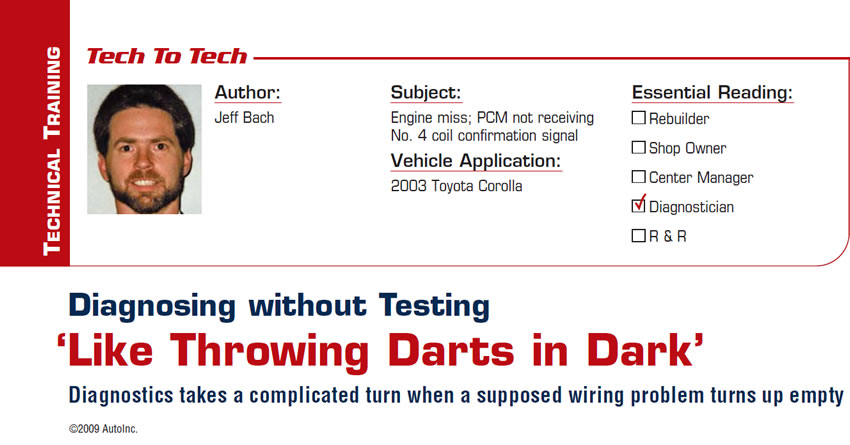
Point de Non-Retour (Point of No Return)
2004 and later AX4N/4F50N units have a new design for the gasket between the case and case cover. Changes in the area of the neutral/reverse accumulator (Figure 1) required a small change in the opening for the accumulator. The 1.490-inch-diameter opening used on 2000-2003 units was increased to 1.810 inches in 2004.
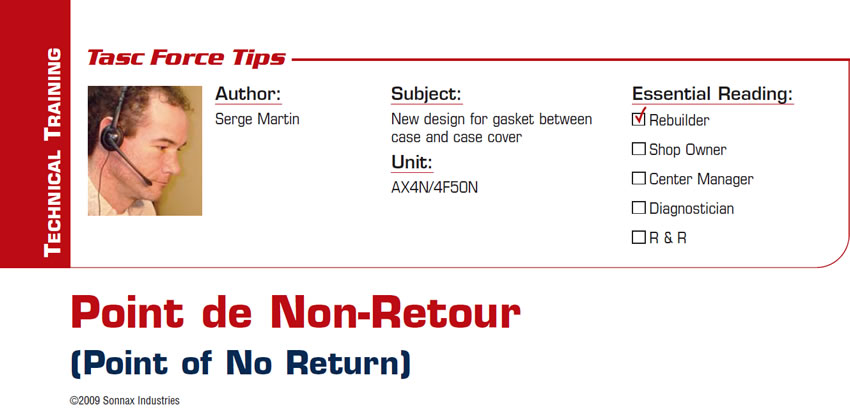
Cynically Clever
One recent example involved a Toyota Camry with the A140-E four-speed transaxle and an L4 engine. Although this transmission was used in model years 1983 through 2001, we rarely receive calls on it – yet in one week I had three calls. One problem was rapid or stacked upshifts with no kick-down shifts. This problem is typically caused by restricted solenoids. The second call was a harsh engagement into reverse. This is typically caused by the use of flat frictions to replace the waved ones originally installed (see Shift Pointers on page XX of this issue).
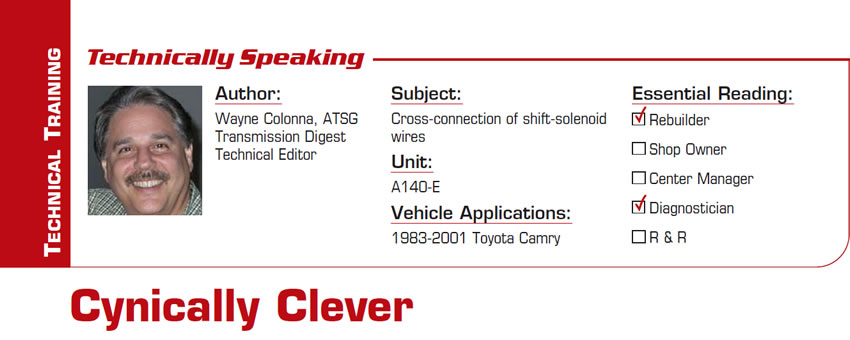
The Wave of the Future
Ever rebuilt a Toyota transmission that then shifted hard into drive and reverse and on light-throttle upshifts, and everything you tried – adjusting the linkage, messing with line pressure – didn’t fix it?
